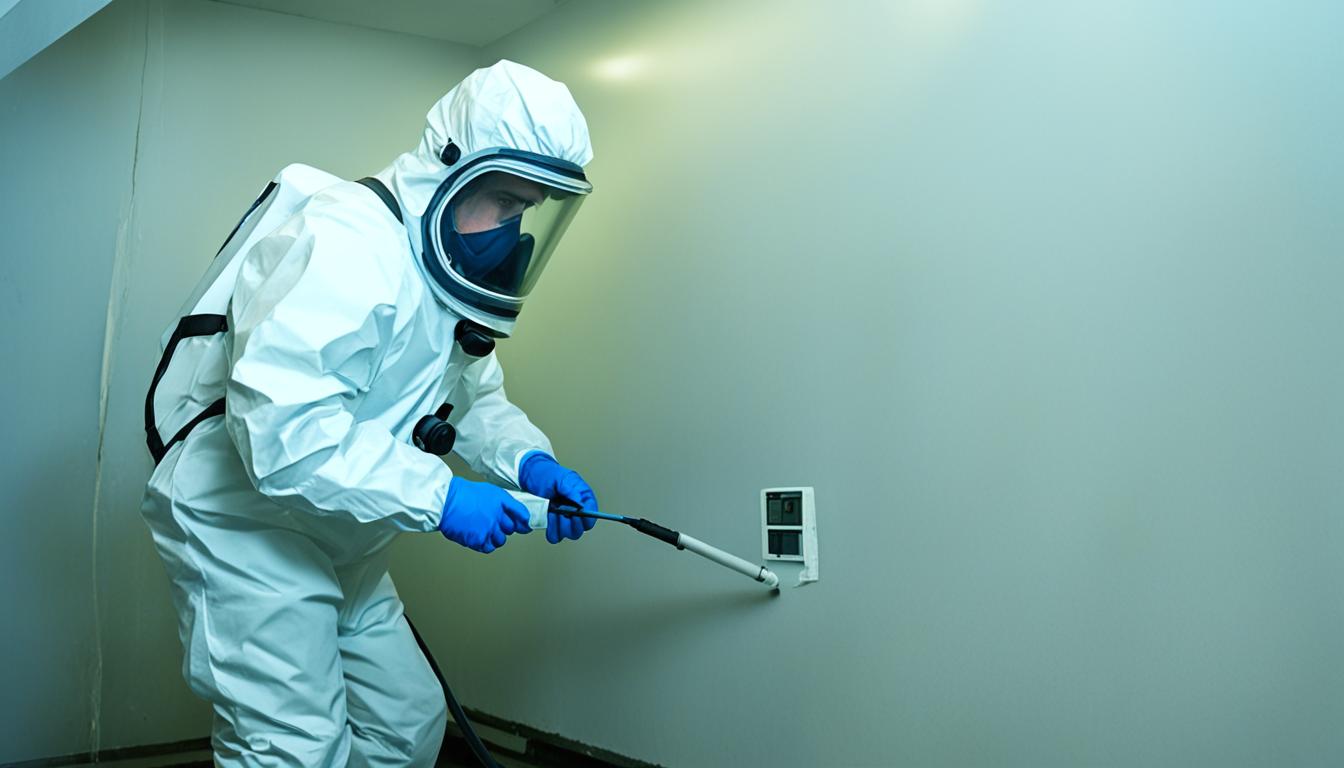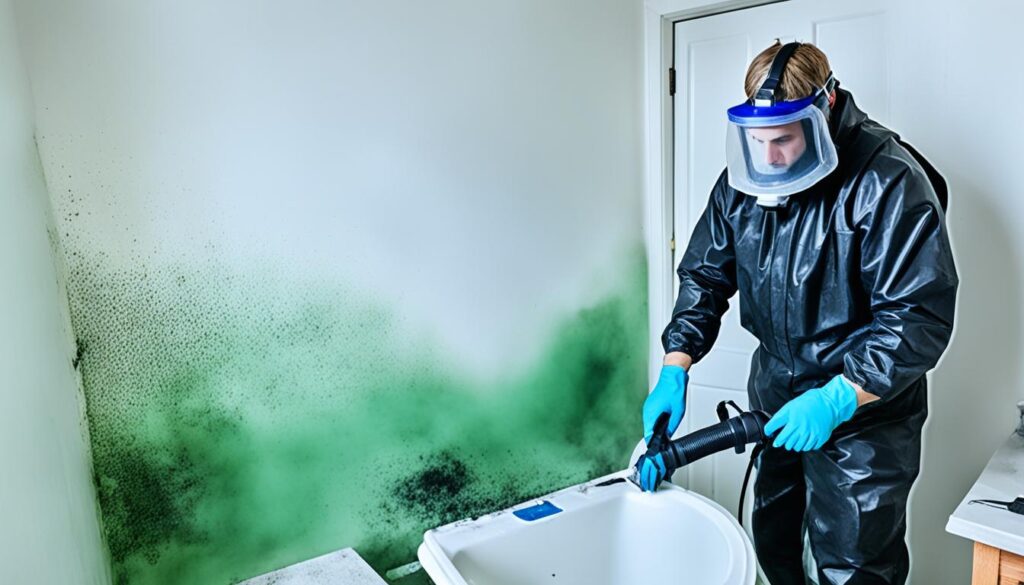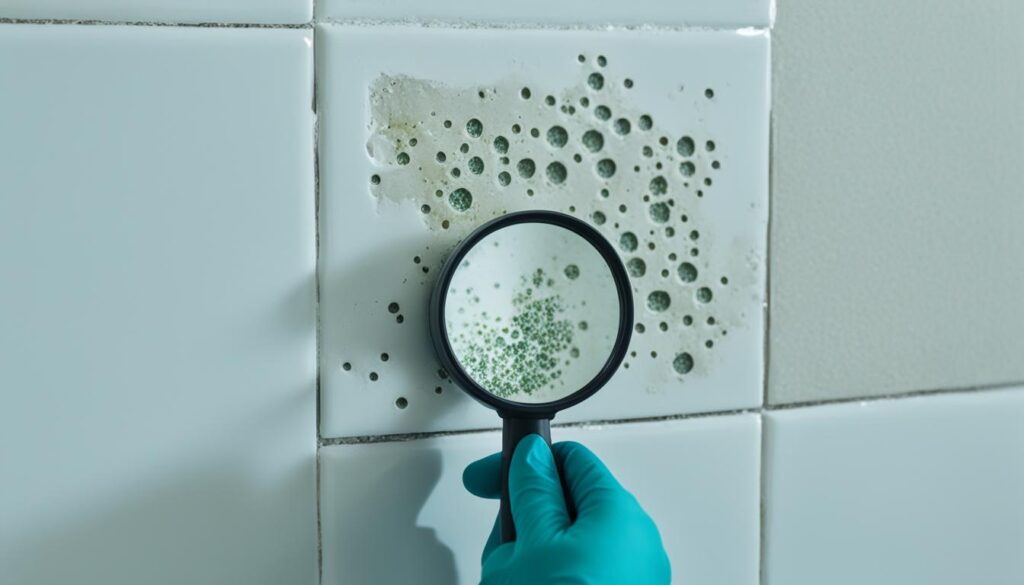
Expert Mold Remediation Advice for Safe Homes
Welcome to our comprehensive guide on mold remediation for safe homes. Mold can pose serious health risks and damage property, so it’s essential to address any mold issues promptly and effectively. In this section, we will provide expert mold remediation advice to help you create a safe and healthy living environment. We will also discuss the importance of certified mold remediation services and share reliable solutions for effectively removing mold from your home.
Key Takeaways:
- Expert mold remediation advice is crucial for creating a safe and healthy living environment.
- Seeking certified mold remediation services ensures professional expertise and reliable results.
- Effective mold removal solutions are vital in preventing further mold growth and keeping your home mold-free.
- Do not underestimate the health risks associated with mold exposure, especially for individuals with respiratory conditions.
- Avoid DIY mold remediation if the affected area is extensive or if there are underlying structural issues.
Professional Mold Removal Tips and Techniques
In this section, we will provide you with professional mold removal tips and techniques to effectively eliminate mold from your home. By following these expert recommendations, you can ensure thorough mold removal and prevent future mold growth.
1. Identify the Mold Source
The first step in mold removal is identifying the source of the problem. Conduct a thorough inspection of your home to locate areas with visible mold growth or signs of moisture. Common areas include bathrooms, basements, and areas affected by water damage.
2. Wear Protective Gear
Before starting the mold removal process, it’s crucial to protect yourself. Wear personal protective equipment (PPE) such as gloves, goggles, and a mask to avoid direct contact with mold spores and minimize inhalation.
3. Contain the Affected Area
To prevent mold spores from spreading to other parts of your home, isolate the affected area. Seal off the room with plastic sheets and use air purifiers or fans with HEPA filters to maintain negative pressure and control the airflow.
4. Remove Mold-Infested Materials
Once you’ve contained the area, remove any mold-infested materials such as drywall, carpeting, or insulation. Use plastic bags to dispose of these items safely. Make sure to double-bag them to prevent cross-contamination.

5. Clean and Disinfect
Thoroughly clean all surfaces with mold growth using a mixture of detergent and water. Scrub the area with a stiff-bristled brush and rinse with clean water. Afterward, use a disinfectant solution to kill any remaining mold spores.
6. Dry the Area
To prevent mold from returning, ensure the affected area is completely dry. Use dehumidifiers and fans to remove excess moisture and improve air circulation. Keep the area well-ventilated during the drying process.
“Proper mold removal requires not only the physical removal of mold but also addressing the underlying moisture issues to prevent future growth.” – Dr. Samantha Miller, Mold Removal Expert
7. Monitor and Prevent
Regularly monitor your home for any signs of mold growth. Address any water leaks or excess moisture promptly. Implement mold prevention strategies such as maintaining proper ventilation, using exhaust fans, and keeping indoor humidity levels below 50%.
By following these professional mold removal tips and techniques, you can effectively eliminate mold from your home and create a safe, healthy environment for you and your family.
Mold Prevention Strategies and Inspection Methods
To ensure a mold-free home, it is essential to implement effective mold prevention strategies and conduct regular inspections. By taking proactive measures, you can prevent mold growth and catch any potential issues before they escalate. In this section, we will discuss expert-tested strategies for mold prevention and provide insights into reliable inspection methods.
Mold Prevention Strategies
Preventing mold growth starts with controlling moisture levels in your home. Here are some key strategies to implement:
- Proper ventilation: Ensure that your home is adequately ventilated to allow moisture to escape. Use exhaust fans in bathrooms, kitchens, and laundry rooms to reduce excess humidity.
- Fix leaks promptly: Repair any plumbing leaks or water damage as soon as they occur to prevent moisture buildup.
- Monitor humidity: Use a hygrometer to measure humidity levels in your home. Aim for humidity levels between 30% and 50% to discourage mold growth.
- Limit indoor plants: While indoor plants can enhance your living space, they can also promote mold growth by increasing moisture levels. Keep plants in well-ventilated areas and avoid overwatering.
Effective Mold Inspection Methods
Mold inspections play a crucial role in identifying any existing mold issues or potential problem areas. Here are some expert-tested inspection methods:
- Visual inspections: Conduct a thorough visual inspection of your home, paying close attention to areas prone to moisture, such as kitchens, bathrooms, basements, and crawl spaces. Look for visible signs of mold, including discoloration, musty odors, or water stains.
- Moisture meters: Utilize moisture meters to measure the moisture levels in different areas of your home. Elevated moisture levels can indicate the presence of hidden mold or areas of excessive moisture.
- Air sampling: Consider hiring a professional mold inspector to conduct air sampling. This method helps detect mold spores in the air and identifies the type and concentration of mold present.
- Thermal imaging: Thermal imaging cameras can detect areas with temperature differences, indicating potential hidden moisture problems that may lead to mold growth.
By combining mold prevention strategies with regular inspections, you can effectively mitigate the risk of mold growth in your home. Remember, early detection and prevention are key to maintaining a safe and healthy living environment.

| Mold Prevention Strategies | Advantages |
|---|---|
| Proper ventilation | Allows moisture to escape, reducing the risk of mold growth |
| Fix leaks promptly | Prevents moisture buildup and potential mold issues |
| Monitor humidity | Helps maintain optimal humidity levels, discouraging mold growth |
| Limit indoor plants | Reduces excess moisture that can promote mold growth |
Conclusion
In conclusion, implementing expert mold remediation advice, mold prevention strategies, and reliable mold remediation solutions is essential for maintaining a safe and mold-free home. By following professional mold removal tips and techniques, you can effectively mitigate mold growth and ensure a healthy living environment for you and your family.
Preventing mold requires a proactive approach. By implementing mold prevention strategies, such as managing humidity levels, improving ventilation, and promptly addressing water leaks, you can minimize the conditions that foster mold growth. Regular inspections and testing conducted by professionals are also crucial to identify mold issues at their early stages. This allows for timely remediation and prevents further damage.
If you suspect or notice mold growth in your home, it is important to seek the services of certified mold remediation professionals. Reliable mold remediation solutions provided by experts, like Fix Mold Miami at 305-465-6653, will ensure that mold is safely and effectively removed from your property. Their top-rated mold remediation services will not only eliminate existing mold but also prevent recurrence, giving you peace of mind knowing that your home is mold-free.




